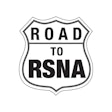Sunday, November 30 | 11:20 a.m.-11:30 a.m. | S2-SSBR01-6 | Room S406A
Can adding MRI data to a multimodal AI algorithm for breast cancer improve diagnosis and long-term risk assessment? It would seem so, according to a research team led by Laura Heacock, MD, of NYU Langone Health in New York.
Heacock and colleagues wrote that a model such as this offers "granular identification of true high-risk women" and "allows for better targeting of supplemental screening and chemoprevention."
The investigators' study assessed the performance of a multimodal transformer model that combines information from digital mammography, digital breast tomosynthesis (DBT), ultrasound, and breast MRI with clinical variables to predict immediate and long-term risk of breast cancer. They created a model training set of 1.3 million exams from 274,388 women taken between 2010 and 2022, then tested it on a cohort of 1,944 women who underwent 18,201 exams.
The researchers found that, without MRI data, the model demonstrated an area under the receiver operating curve (AUROC) of 0.899 for cancer detection on digital mammography and DBT for five-year risk prediction. Adding MRI data to the model improved this result, for an AUROC of 0.94.
Make sure to attend this presentation to learn more about the group's findings.



